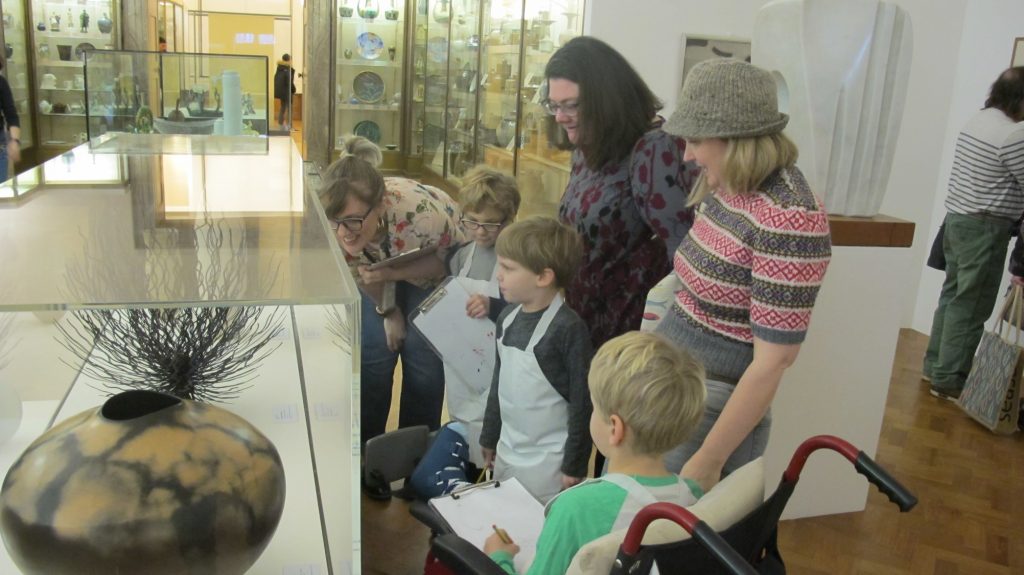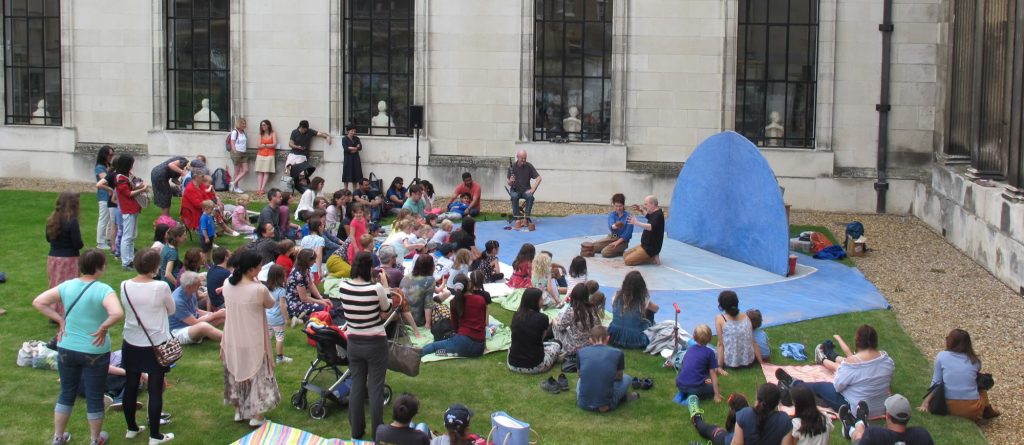Families and Early Years Case Study
Holly Morrison, Museum Educator (Families and Schools), The Fitzwilliam Museum
Nicola Wallis, Museum Educator (Schools and Early Years), The Fitzwilliam Museum
About the project and our evaluation challenge
At the Fitzwilliam Museum, we run an extensive programme of activities for children and families. This includes free family drop-in events and bookable workshops for ages 0-2, 2-5, 5-7 and 8-12. In addition to the public programme, we have developed strategic partnership programmes with the aim of reaching new family audiences.
Prior to the Practical Evaluation Project, activities were evaluated using paper forms. Each of these were unique to the workshop or event, giving inconsistent data that was not comparable across different activities. It was not possible using this system to keep track of repeat visits, or to use the information to develop the programme in collaboration with the needs of our audience. The systems used were not compliant with GDPR regulations.
One explanation for this disconnected approach to evaluation methods, was that different strands of the programme were led by several members of the learning team. This led to a lack of clarity around the overall aims of the family programme and so we hoped that our work on this project would help us to address this.
Setting the scene
One of the initial hurdles for getting started with the project was finding the time to reflect and take an overview of the whole family programme together. However, we soon realised that this was essential in order to to understand how to evaluate it effectively.
We began by listing our current activities and trying to match them to broader Institution Level Goals. This approach was linked to our role as practitioners where we are used to focusing on the small details of individual events and workshops. However, on consultation with the project team we discovered that this was the wrong way round to complete the logic model process. In fact, we needed to start the other way around and begin by defining our Programme-Level Impact Goals in alignment with the Institution-Level Impact Goals. From here, we were then able to consider in what ways our delivery methods might contribute to these. Through this process, we realised that we could now use the logic model to interrogate our delivery methods rather than simply use the logic model to map them onto our impact goals.
Reflections on using logic models for families and early years programmes
Once we put this right, the process enabled us to understand how we might adapt our existing sessions in order to improve the quality of the outcomes. For example, in order to enable greater collaboration between family members (one of the key Programme-Level Impact goals we had identified) we decided we needed to change the room layout for some sessions. The logic model enabled us to better brief volunteers on how to support this, and prompted us to focus on collaborative outcome aims when working with and hiring freelancers.
Our discussions whilst developing the logic model together helped us to realise how the aims of the Early Years and general Family programming could be aligned. Once we had a clear idea of our hopes and aims for children and families visiting the Museum, we were able to share these aspirations more widely with the rest of the learning team, and raise awareness more broadly of the rationale underpinning our programming for Families. The logic models have provided us with a powerful tool for advocacy internally and externally and have given us greater confidence to explain the rationale behind our work. The process has also encouraged us to draw on current research and evidence around effective learning and engagement with early years and family groups and relate this directly to how we plan and evaluate our programmes.
Although we are still in the early part of our logic model journey, it has given us the opportunity to reflect on whether the activities we deliver are in alignment with our overall aims, and to suggest changes to support future programming in ways that will help us to achieve our goals. We are now hoping to develop this work further to unpick what constitutes a family group and how we can link this work with our programming for teenagers. We are also still in discussion about how and where to situate enjoyment and fun within the logic model. We know it should be in there but we are not sure where to put it and how to measure it!
Challenges and next steps
After working on our logic models, we then worked together to create an online survey with Eric to collect feedback from adult participants at Family Events. Unfortunately, we have not been able to automate the survey with our bookings system. We use a sign in sheet at all our events and workshops and so we now also use this to ask for consent to be sent an evaluation survey. We then enter these emails addresses into the automated system and it sends a survey link out to them and up to 3 reminders inviting them to participate in an evaluation survey. However, we are finding that delays in entering these emails into the system have resulted in only a small percentage of completed evaluations. We hope that we will overcome some of these issues and begin to collect more data over the next few months.
There is still more work to be done on our Family Programme evaluation. It is clear that some families do prefer to give us feedback on the day and we are also keen to explore how we can collect feedback from the children taking part in the activities. We are working with the project team to explore how we might use additional evaluation methods to capture feedback from young children taking part in our events.
Images


Images above: (1) Family Workshop at The Fitzwilliam Museum (2) ‘Clay Time’ Family Performance at The Fitzwilliam Museum (c) University of Cambridge Museums